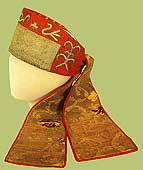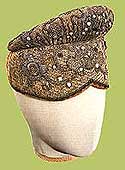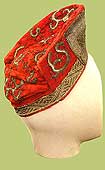The Museum Collections
Introduction
I. History and Art Collection
1. Icons of the 14th – 19th centuries
icons of the 14th – 17th century
2. Jewelry art of the 14th – 20th century
jewelry art of the 14th – 17th century
jewelry art of the 18th – 19th century
the european silver 14th - 19th centuries
3. Small-size sculptures (works of metal, wood, bone)
XI – the beginning of the XX century
Small-size sculptures 11th – 17th century
Small-size sculptures 18th – early 20th century
enamel of Troitza masters 15-8th – early 20th century
5.Embroidery, lace, textiles of the 14th - early 20th century
icon and ornamental embroidery
gold and silver lace
6.Painting of the 18th – 21st centuries
painting of the 18th – 19th centuris
painting of the 20th – 21st centuris
II.Manuscripts and old printed books of the 14th – 17th century
IV.Lithography of the 18th – 19th century
V.Numismatics
VI.Medals of the 18th - early 20th century
VIII.Archeology collection
IX. Russian folk and applied and decorative art of the 17th – 21st c.
1. Artistic wood
folk carved and painted wood
wooden toys
house carving of Sergiev Posad
Khokhloma and Gorodets painting
2. Artistic textiles
embroidery and weaving
printed textiles and lace
Russian shawls
folk costumes
folk garments
printed cotton kerchiefs
|
Folk costumes of 19th - the beginning of 20th century(P. 2)
|
ÑA headdress was the essential part in Russian national clothes. If girls wore an open plait, but hair of married women kept within round a head and were cleaned then under the closed headdresses - a kokoshnik, “morshen”, “borushka”, “kikha”, “sorocka”.
Each region of Russia, and often district also had the certain form, own decor and even the specific name of a headdress. Among northern headdresses the maiden bandages of areas of the rivers of Mezen, Pinegi and Northern Dvina are interesting. Women from rich families wore very elegant kokoshniks embroidered by pearls and gold threads.
Êokoshniks were often covered entirely by small river pearls. Over kokoshniks put on white scarves, embroidered gold, or patten shawls. Such is a kokoshnik of the beginning 18th in meeting of a museum from the Tver province. Narrow and high under the form a female headdress of the Kostroma region decorated pearl “podniz” (thread or some the bound threads with strung pearls, beads), going down to eyebrows.
|

Kokoshnik. 18th - early of 19th century. Tver region |

Headband. 19th - early of 20th century. Arkhangelsk region |

Kokoshnik. Early of 20th century. Kostroma region |
“Borushkha” from Vologda is the closed female headdress consisting of “ochelie” (semicircular front guard of a kokoshnik) on the firm basis and the bottom. “Borushkha” is usually decorated by a gold embroidery, nacre, glasses. Kokoshnik from Solvychegodsky district of the Vologda province is a little similar on “borushkha”. It consists of two parts: proper kokoshnik and “samshura” (headdress with firm flat top of the round, oval, trapezoid form, with rather narrow soft cap band, fastened on a nape tapes), which was put in kokoshnik for form maintenance.
Almost in all regions of Russia the technique of gold sewing was applied to a headdress ornament. Such sewing covered small Ryazan “kikha” (celebratory headdress of the married woman) with red small horns from a red bunting, graceful “sorocka” of Voronezh, kokoshniks of the former Novgorod land. Various metal spangles used also with gold sewing. The wedding headdress - "sorokha” consisted of three parts: “kikha” with small sharp horns, headdress on back of head and proper "sorokha” heel-figurative forms.
|

“Borushka”. 19 century. Vologda region |

Kokoshnik. 19th century. Vologda region |

"Sorokha”. Wedding headdress.
Early of 20th century. Voronezh region |
|


